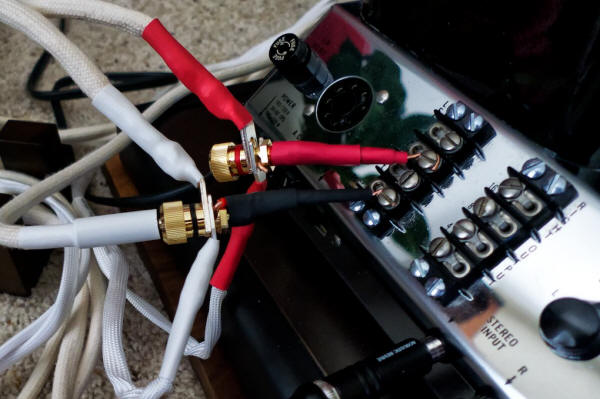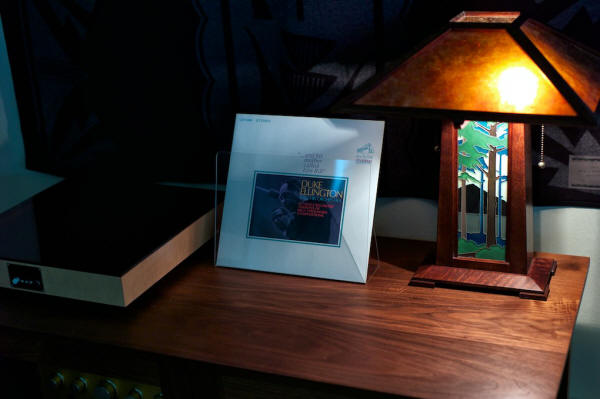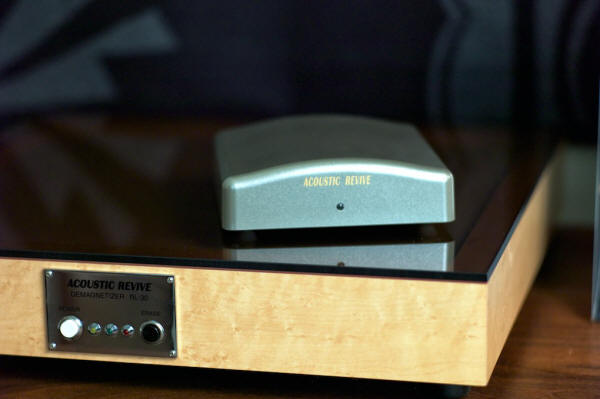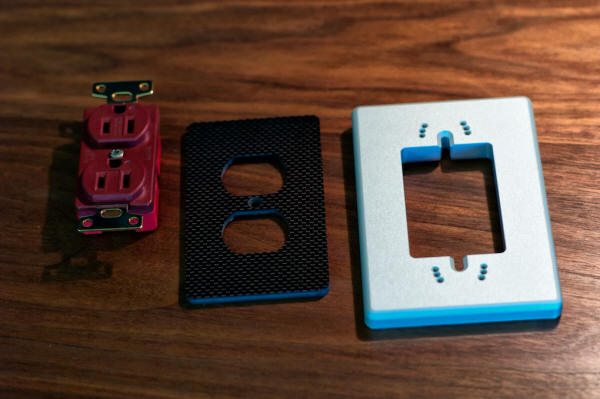|
You are reading the older HTML site
Positive Feedback ISSUE 68
The Acoustic Revive Chronicles: Chapter 10
As many of you know, I've really enjoyed writing about the Acoustic Revive audio accessories that are designed and manufactured by Mr. Ken Ishiguro in Japan. If you've looked closely at the photos in my articles for Positive Feedback Online over the years, you've seen Acoustic Revive accessories everywhere—that's because they work great! Believe me, nothing lasts for long in my system if it doesn't work great! I've spent more time writing about Acoustic Revive products than I have anything from any other company. I've been so impressed with the Acoustic Revive products of Mr. Ken Ishiguro that I have dedicated a whole series of articles to them called The Acoustic Revive Chronicles: Chapter 1 – RR-77 ultra-low frequency pulse generator – 6Moons (February 2008) Chapter 2 – RIQ-5010 & RIQ-5010W Quartz Insulators and the QR-8 Quartz Resonators – 6Moons (March 2008) Chapter 3 – RCC-24 Ground Conditioner, the SIP-8F RCA Input Shorting Plug – 6Moons (May 2008) Chapter 4 – RPT-2 and RPT-4 Ultimate Power Distributors and the Power Reference Power Cables – Positive Feedback Online (September/October 2008) Chapter 5 – REM-8 EMF Canceler – Positive Feedback Online (November/December 2008) Chapter 6 – RWL-3 Acoustic Conditioner; CB-1DB Receptacle Base Plate, the CFRP-1F Carbon Fiber Outlet Plate, and the CS-F2 Outlet Stabilizer – Positive Feedback Online (March/April 2009) Chapter 6a – Getting Top Performance From Your Digital Media: Shine Ola Optical Disc Cleaner, the Acoustic Revive RIO-5II Negative Ion Generator, and the Acoustic Revive RD-3 Disc Demagnetizer – Positive Feedback Online (September/October 2009) Chapter 7 – Custom Series Loudspeaker Stands, the RST-38 and TB-38 Quartz Under-Boards, and the RAF-48 Air Floating Board – Positive Feedback Online (January/February 2010) Chapter 8 – Single Core speaker cables & RCA interconnects, RCI-3 Cable Insulators (May/June 2010) Chapter 9 – The RAS-14 AC Power Conditioner and the USB-1.0SP USB Interconnect (May/June 2011) Over a span of five years I've written ten different feature articles about Acoustic Revive products – that's almost a book! I had thought I had written about everything there was to write about Acoustic Revive so I thought that The Acoustic Revive Chronicles had come to an end. I am glad to report that they have not—The Acoustic Revive Chronicles are alive! Mr. Yoshi Hontani and Mr. Ken Ishiguro have sent me another batch of Acoustic Revive products to write about for Positive Feedback Online. Ken San has been busy refining past products and developing new products so there are some exciting new things to tell you about in Chapter 10—and beyond—of the Acoustic Revive Chronicles. In Chapter 10 I'm going to tell you about the new version of the RR-77 Schumann Pulse Generator with four times the output—the RR-777 Schumann Pulse Generator, the RL-30 Mark III Analogue Disc Demagnetizer for treating your beloved LPs, and a high-performance in-wall AC interface that consists of the combination of the CB-1DB receptacle base plate, the CFRP-1F carbon fiber outlet plate, and the Acoustic Revive modified Oyaide R-1 receptacle. The Review System To gather listening impressions for Chapter 10 of the Acoustic Revive Chronicles I used my usual front-end combination of an EMT TSD-15 phono cartridge mounted on a VPI Classic turntable (an over-achieving combination if there ever was one).
For phono equalization I used the superb New Valve Order SPA-II, with the output going to the direct inputs of the Leben RS100U vacuum tube preamplifier.
The front end electronics drove either my restored vintage McIntosh MC240 stereo 6L6GC vacuum tube amplifier, or the vintage Marantz 8 stereo EL34 vacuum tube amplifier that my friend Leo graciously allowed me to listen to during the review period—thanks Leo!
For loudspeakers I used my usual reference Tannoy Westminster Royal SE loudspeakers.
I recently bypassed and replaced the stock crossovers of my Tannoy Westminster Royal SE loudspeakers with the absolutely amazing Duelund CAST external crossovers developed during the Duelund-WRSE Project that I have been chronicling on my personal blog here, and which I will be writing a full feature article about in the coming months for Positive Feedback Online—stay tuned!
I'm using the Sablon Audio Panatela component speaker cables supported with Acoustic Revive RCI-3 Cable Insulators. I am also using a full set of Panatela component speaker cables as the internal wiring for my WRSEs as part of the Duelund-WRSE Project. The Panatelas are connected directly to the Dual Concentric drivers inside the Westminsters, then routed down and out through the cabinets to connect directly to the Duelund CAST external crossovers. This approach eliminates all of the sonically degrading internal connections within the Westminsters, providing an ultra-pure and uninterrupted Panatela signal path direct from the Duelund CAST external crossover to the WRSE's Dual Concentric driver. That combined with the aforementioned Panatela component speaker cable set from the amplifiers to the Duelund external crossover makes for a complete Panatela signal path from amplifier to the Dual Concentric driver.
I used Sablon Audio Panatela interconnects from my turntable to the New Valve Order SPA II phono stage, and from the NVO to the Leben RS100U line preamplifier. I used a long run of Acoustic Revive Single Core interconnects (scheduled for review in Chapter 11 of the Acoustic Revive Chronicles). Acoustic Revive RPT-2 and RPT-4 Ultimate Power Distributors were used for connecting electronics to wall outlets via Acoustic Revive Power Reference AC power cords. Acoustic Revive Power Reference AC power cords were used to connect the VPI Classic turntable and Leben RS100U to the Acoustic Revive RPT-2 Ultimate Power Distributor, and a Sablon Audio Gran Corona power cord connected the NVO SPA-II phono equalizer to an Acoustic Revive RPT-4 Ultimate Power Distributor. The RR-777 Schumann Pulse Generator ($650 USD) I thought I'd kick off Chapter 10 with the updated version of the very first Acoustic Revive product I ever reviewed back in 2008—the RR-777 Schumann pulse generator.
If you read my original review of the Acoustic Revive RR-77 Schumann generator, then you're familiar with how it works and its rather remarkable effect on the listening experience. For those who aren't familiar with that original article, let me give you a quick refresher: The idea behind the Acoustic Revive RR-77 (now called the RR-777) Schumann generator is that it conditions your Hi-Fi rig, your listening room, and you—all at the same time. What? Not only that, it accomplishes that conditioning effect without even plugging it directly into your Hi-Fi. What? Yes, that's right. Let me include part of my description of the RR-77 from that original review (with a wee bit of editing): "The Acoustic Revive RR-77 ultra-low frequency pulse generator is a stand-alone active device that plugs into a wall outlet but not your HiFi rig. According to Acoustic Revive, the RR-77 generates a 7.83Hz Schumann frequency pulse that 'shields' your HiFi electronics and listening room from radio frequency interference and thereby improves the S/N ratio so the electronics perform better. Let me give you additional background because there's quite a lot more to the RR-77 than that. Let's start with the Schumann resonance frequency phenomena. The Schumann resonance is a natural geophysical resonant frequency mode of the Earth that occurs at approximately 7.83Hz. Physicist Winfried Otto Schumann predicted it mathematically in 1952, and it was eventually named in honor of him. Here's how it works: When solar radiation strikes the Earth's outer atmosphere, molecules like NO, N2 and O2 are ionized to produce a positively charged layer called the ionosphere. The surface of the Earth has a negative charge of electricity due to transfer of electrical energy from the atmosphere. The portion of the atmosphere between the positively charge ionosphere and the negatively charged Earth surface acts as a natural capacitor where charges build up and then discharge in the form of electrical storms. These electrical storms produce electromagnetic waves in the very low frequency and extremely low frequency ranges. These naturally produced electromagnetic waves are attenuated by the ionosphere and the Earth's charged surface which functions as a waveguide. These attenuated electromagnetic waves travel around the world in the atmosphere as standing waves at the frequency of 7.83Hz and its harmonics. For a nice description of all the intricacies of the Schumann resonance, I suggest visiting the Wikipedia article here. Some scientists believe that over evolutionary time, biological organisms evolved to use the Schumann resonance phenomena as one mechanism for maintaining biological health. For an example, they point to the human brain's electromagnetic waves that are synchronized to the Schumann frequency. In studies when people were shielded from the naturally occurring Schumann resonance frequency, their circadian rhythms were disrupted and they began to experience migraine headaches, emotional stress and other health issues. When exposed to Schumann pulse generators of 7.83Hz, their symptoms disappeared. Dr. Guy E. Abraham, MD, a former Professor of Obstetrics, Gynecology and Endocrinology at the UCLA School of Medicine, has done some interesting research on adverse health effects on patients due to that same electromagnetic pollution. He found that his patients could be effectively treated using a Schumann resonance 'shield' generated by a pulsed emitter (research results were published in Original Internist). Dr. Abraham said that "since EM pollution is due to man made EM energy with frequencies different than the Schumann fundamental, an emitter of EM potential pulsed at the Schumann fundamental would be expected to shield the human body from the harmful effects of EM pollution." Dr. Abraham also reported how patients exposed to Schumann pulse generators experienced improved health and "a sense of well-being"." That's pretty interesting stuff don't you think? During the review of the RR-77 it was obvious that it was doing some pretty interesting things, with the sound becoming more natural, smoother, and more musically lifelike. Space also opened up in a recording's acoustic, with the music enveloping the listener, and notes decayed in a much more natural fashion. The edge, grit, or glare there was to be heard on lesser recordings also became more tolerable.
My audio pals Pete Riggle and Stephæn Harrell both bought an RR-77 after giving it a listen at my place, and those two rarely do such a thing! I've been steadily listening to it since 2008, and I still find it to be one of the most easily recommendable audio accessories out there. The RR-77 became an instant hit with the audio underground too, and a fair number of people who bought the original RR-77 couldn't resist the temptation to hot-rod it with a more robust outboard power supply (including my buddy Stephaen), and the results were impressive. A bigger power supply made for a bigger Schumann pulse and a greater beneficial effect in the listening room.
In like fashion Mr. Ken Ishiguro has also been working on hot-rodding the RR-77, and as a result of his experiments he came out with a new updated version that's called the RR-777. The RR-777 now has about four-times the Schumann pulse strength that the RR-77 did.
As you can see in the photos, the RR-77 and the RR-777 are the same size externally (although the power supplies are different). Mr. Ken was kind enough to send two RR-777 for me to try so I could experience the effect of using multiple RR-777s in my Hi-Fi systems. Here's a little story for you: My buddy Chad and I have wiled away a good many evenings listening to great music, laughing and talking, drinking a few great craft beers, and listening to some amazing Hi-Fi gear. Chad retired in the last year and has now been spending time between his cabin on Lake Chelan and his place in Seattle. He stopped by over a weekend a while back to drink a few craft beers, listen to some great music, check out the awesome Hi-Fi gear, and laugh & talk—just like old times—it was a treat!
Chad spotted the two new RR-777s right away, which were sitting up on my mantle next to the RR-77. "Let's do a listening session and see if we can hear any difference when turning them on one at a time." Chad had his eyes closed and I quietly turned on the RR-77. He noticed immediately, "That's it!" The same thing happened when I turned on the first and then the second RR-777. "Wow!" Chad exclaimed. I'll tell you this right now: When I turned on the third RR-777 the combined effect with the first RR-77 and the second RR-777 was too much for me, as it gave me a moderate case of vertigo, and I needed to turn it off and then sit down for a moment. Chad remarked on the heady result as well. Two RR-777s are ok, and an amazing experience, but three was too much of a good thing for me. These new RR-777 are amazingly powerful devices not only in the way they improve the sound & musicality of a Hi-Fi, but also in the way they can affect the listener. In magnitude how big is the difference that these RR-777 devices make? Big. As Chad put it, "Most people would hear more of a difference in their system than they would from buying a new amplifier." Chad's exactly right; the magnitude of the change was impressive. I also tried the RR-777 in my Leben & Harbeth 'music lovers' system that I've added video to. The RR-777 also seems to be able to improve video quality, and while I need to do some more checking to be completely sure about this, it seems like it helps lesser sources the most. For example, I thought I noticed more improvement to my Apple TV and Roku streaming images than I did when playing Blu-Ray discs from the Oppo.
Like Chad, Stephaen, and me, I think you too will be impressed with the RR-777. I like two of them in my main music system, and one of them in my video system. The RR-777 is one of the most easily recommendable audio accessories I have come across. Mr. Ken Ishiguro has once again hit a home run with the RR-777! The RL-30 Mark III Analogue Disc Demagnetizer ($2959 USD)
The RL-30 Mark III demagnetizer is designed Mr. Ken Ishiguro primarily for analogue records, but Ken San says you can also demagnetize cables and multiple CDs/DVDs/Blu-Ray discs in it as well. Like a number of the Acoustic Revive products, the RL-30 Mark III Demagnetizer also utilizes the mineral Tourmaline to generate negative ions to treat the media being demagnetized. Like all Acoustic Revive products, the fit and finish of the RL-30 Mark III demagnetizer is extraordinarily good. The chassis of my review unit appears to be veneered with Bird's Eye maple, and has a chrome control panel that is both tasteful and beautiful. The hinged top cover is smoked Plexiglas and keeps the dust out when you're not treating records.
To treat an LP all you do is raise the top cover and place the LP on the spindle.
Then close the cover and push the 'Erase' button. A red indicator light illuminates while the LP is being demagnetized, then when the red indictor light goes out and the green indicator light illuminates, the demagnetization process is complete.
On every LP I've treated the RL-30 Mark III demagnetizer worked as advertised. The Civil Wars Unplugged album by Joy Williams and John Paul White is a live album of beautifully simple folk music consisting of Williams' vocals, and White's vocals & guitar accompaniment. I really enjoy their music as it is beautifully and passionately performed, but the recording can be a little bit hard and edgy sounding at times, which can be a bit distracting. Treating The Civil Wars with the RL-30 Mark III demagnetizer improved the LP by providing a smoother, richer, and more timbrally honest presentation. Also, the treated LP had a more tonally colorful presentation with a better sense of tempo and dynamics. Transparency and the sense of space in the recording were also enhanced. The RL-30 Mark III demagnetizer can't perform magic by making harsh or hard sounding mass-produced albums like The Civil Wars sound like they are carefully crafted limited edition audiophile recordings, but it will make them sound more musically enjoyable and easier on the ears—your ears will smile.
On high-quality audiophile versions of LPs, like Analogue Productions 45-RPM version of Counting Crows August and Everything After, the RL-30 Mark III demagnetizer had a much more dramatic effect than it did on lesser LPs, and in a way I least expected it: The RL-30 Mark III demagnetizer improved those aspects of recordings that are most associated with evoking an emotional response. Tempo, which is usually considered to be the most important factor for evoking an emotional response, is more distinct, and the recording sounds louder and more dynamic at the same volume setting, which pays dividends in the way melodies and rhythms are portrayed. Tonality (major and minor) is also more obvious, and timbral textures are richer, which all combines to make the music more emotionally evocative. The treated LPs also seem more transparent, with better detail recovery, improved imaging, and more layering in evidence. The RL-30 Mark III demagnetizer really brought out the musical attributes of August and Everything After, making the music more fun and emotionally engaging to listen to. The trend I observed was that the better the source material, the more it benefited from treatment with the RL-30 Mark III demagnetizer, and the greater the effect was. This is an expensive accessory, but those with extensive record collections should take note. If you want an RL-30 Mark III demagnetizer just be forewarned that it is a limited series and only 300 examples are being offered worldwide. Once they're gone they're gone, so don't say I didn't warn you! In the USA the RL-30 Mark III Demagnetizer is sold exclusively through Simply Analog and Acoustic Revive USA. CB-1DB Receptacle Base Plate ($350 USD), CFRP-1F Carbon Fiber Outlet Plate ($300 USD), and Acoustic Revive Modified Oyaide R-1 Receptacle (custom item that is not available for purchase)
I was quite impressed with the CB-1DB Receptacle Base Plate and the CFRP-1F Carbon Fiber Outlet Plate when I wrote about them in Chapter 6 of the Acoustic Revive Chronicles, so I was curious about how much more performance the Acoustic Revive modified Oyaide (pronounced "Oh-yah-ee-day") R-1 AC receptacle would bring to the show (which was not available at that time).
I have heard via the audio underground that people have been impressed with the performance increase that the Oyaide receptacles were capable of bringing to a Hi-Fi system, so I was curious about what the result of replacing my receptacles with Acoustic Revive's modified version of the Oyaide R-1 would yield.
Ken and Yoshi sent me two full sets of the CB-1DB Receptacle Base Plate, CFRP-1F Carbon Fiber Outlet Plate, and the Acoustic Revive Modified Oyaide R-1 Receptacle, so I would be able to install them into the two wall outlets I use to power my equipment for maximum system-wide effect. Now let me back up a little and refresh your memory from the Chapter 6 descriptions of the theory behind the CB-1DB Receptacle Base Plate and the CFRP-1F Carbon Fiber Outlet Plate: You know how equipment footers and isolation platforms improve the sonics of your gear by reducing or eliminating the mechanical vibration coming up through your equipment stand from the floor? The idea is that when your Hi-Fi equipment is rattled around by vibration it introduces electrical noise into the signal path that degrades the signal-to-noise ratio of the electronics, resulting in poorer sound from your Hi-Fi rig. By reducing the vibration you increase the signal-to-noise ratio, allowing your equipment to function as it was designed to, the result being better quality sound. When you put in devices that truly decouple your Hi-Fi gear from vibration, the improvement can truly be astounding, both from a musical and audiophile sonic perspective. Acoustic Revive points out, that while it may not be immediately obvious, when you decouple your gear from floor borne vibration via footers, isolation platforms, and the like, there is still a major source of vibration that goes directly into your electronics that you haven't yet addressed, and may not have even realized was present—the vibration path from the AC mains connection that goes directly into each component. Acoustic Revive says that the AC outlet serves as a source of vibration transmission directly into your equipment, from both normal floor borne mechanical vibration and the vibration produced by the 60Hz cycling of AC in the power grid. So essentially, your power cord serves as a vibrational link from the AC outlet to your electronics, degrading their signal-to-noise ratio, and thereby reducing their audio performance. So the idea behind the CB-1DB Receptacle Base Plate, the CFRP-1F Carbon Fiber Outlet Plate, and the CS-F2 Outlet Stabilizer is to reduce the amount of vibration coming through the AC outlet and into your equipment. If you think of these devices like equipment footers or isolation platforms for your wall outlet that dissipate vibrational energy before it gets into your equipment to degrade their sonic performance, then you've got it. Acoustic Revive tested numerous combinations and blends of metal by fast Fourier transform (FFT) for their ability to reduce the vibration coming from the AC receptacle. You can see their experimental design and vibrational analysis results here. They also did numerous listening tests on differing base plate designs, and chose the one that provided the maximum vibration reduction with the most natural tonal signature. Acoustic Revive goes into detail on their web page for the CB-1DB about how the metallurgical composition of the materials chosen effect the tonal outcome of the device, and it is a fascinating read. The final design chosen for the CB-1DB was one that uses a hybrid structure: 2017 Duralumin as the outer casing of the plate and brass for the inner plate structure. The 2107 Duralumin housing is coated with a gorgeous white Alumite finish, and the brass is beautifully chrome plated, to protect them from oxidation. The two pieces are mechanically joined via machine screws. The design work, listening sessions, and quality of materials that have gone into the CB-1DB receptacle base plate are extraordinary, so if you were wondering why it costs a hefty $350 USD, now you know. The Acoustic Revive modified Oyaide R-1 are custom items that Yoshi & Ken sent to me to show off the performance potential of the receptacle base plate and carbon fiber outlet plate, and they are unfortunately not available for purchase. Don't despair though, as I'm going to tell you about two other commercially available products that you can get right now to use in exactly the same way. Now about the Acoustic Revive customized Oyaide R-1 receptacle: Acoustic Revive uses a special version of the Oyaide R-1 receptacle with a beryllium-copper electrode (if you look up a photo of the stock R-1 it looks different). Ken San says that the beryllium-copper electrode has better conductance characteristics, and its also been polished to a mirror finish to further improve conductance. Acoustic Revive modifies the electrode parts of the R-1 by applying a thick silver plating followed by a thick rhodium plating, both of which Acoustic Revive says improves the conductance and phase characteristics over the stock R-1. After the plating modifications Acoustic Revive cryogenically treats the electrode parts at -196oC for an additional improvement to conductance. After all the internal electrode parts are cryogenically treated they are reinstalled into the Oyaide resin receptacle bodies. These customized Oyaide R-1 AC outlets are the same as what Acoustic Revive installs in the RPT-2 & RPT-4 Ultimate Power Distributors. Installation SAFETY CAUTION: The CB-1DB receptacle base plate, CFRP-1F carbon fiber outlet plate, and the Acoustic Revive modified Oyaide R-1 receptacle are easy to install, but be sure you shut off the circuit breaker at the main service panel, and then test the circuit with a multi-meter to be sure it's off before you proceed with installation. You don't want any power going to the outlet while you install the CB-1DB, CFRP-1F, and the R-1, otherwise you could have one of those zap & thud moments that will end your audio pursuits forever. You've been warned! If any of this makes you at all nervous, then I recommend you hire an electrician to do the installation for you.
I already had the CB-1DB receptacle base plate and CFRP-1F carbon fiber outlet plate installed in one of my outlets from Chapter 6 years. If you have read Chapter 6 you know I was surprised to hear a difference in my system from these two accessories, let alone the impressive difference they made: "Transparency had opened up; the sense of space had increased, there was more recorded detail in evidence, the bass lines became deeper and more articulate, musical notes trailed off with more realistic decay, the timbral signature of the body of the instruments becoming more evident (e.g. wood, brass), and the music came across as more naturally 'live' with more 'snap' to the notes and greater musical flow." Now knowing to never underestimate the performance of these Acoustic Revive accessories, I decided to install the Acoustic Revive modified Oyaide R-1 receptacle in place of my generic receptacle, to serve as a baseline in combination with the CB-1DB receptacle base plate and CFRP-1F carbon fiber outlet plate.
Listening Listening to Miles Davis' Kind of Blue I was impressed with the overall improvement of adding the Acoustic Revive modded R-1 to my existing outlet with the CB-1DB receptacle base plate and CFRP-1F carbon fiber outlet plate. I'm very familiar with the improvements gained from the CB-1DB receptacle base plate and CFRP-1F carbon fiber outlet plate (see Chapter 6) already, but I have to say I was surprised how much of a difference it made going from my standard AC receptacle to the Acoustic Revive modded R-1 receptacle—it's a major improvement.
With the Cowboy Junkies' The Trinity Session LP my positive impressions were further reinforced. The Acoustic Revive modded R-1 was significantly more organic sounding, smoother, with more intense tone color and timbral textures. The modded R-1 is just better all the way around than a stock receptacle. Installing the Acoustic Revive Modified Oyaide R-1 to replace your stock receptacles is as easy as recommendations get, and its one of the better bang-for-the-buck improvements you can make in your Hi-Fi system.
I was impressed with the results from converting the outlet that powers my amplifier and phono stage over to the combination of the CB-1DB receptacle base plate, CFRP-1F carbon fiber outlet plate, and the Acoustic Revive modified Oyaide R-1 receptacle. I was curious what the result would be installing another the second set of CB-1DB receptacle base plate, CFRP-1F carbon fiber outlet plate, and the Acoustic Revive modified Oyaide R-1 receptacle, into the second outlet that powers my line preamplifier and turntable.
After getting everything installed I gave an LP or two a listen, and my Hi-Fi sounded worse! That was not at all what I was expecting to happen. With the second set of Acoustic Revive components installed in my outlets, while the overall sound became astonishingly transparent, it also became lean and slightly edgy, which I found to be unpleasant. As I thought about this outcome, I wondered what the heck was going on. Was it just the sonic signature of the Acoustic Revive modified Oyaide R-1 outlet? Or was it just a simple case of too much of a good thing? Or was something else going on? As I thought more about it, I wondered if the additional transparency of a second Oyaide R-1 might be revealing a weakness somewhere else in my Hi-Fi rig. Then I realized that I had also changed the speaker cable adapters on my vintage McIntosh MC240 amplifier. I wondered if the new adapters could be contributing to the unpleasantries I was hearing, so I installed some bypass adapters I had made with a few inches of Neotech 14 gauge copper UP-OCC mono-crystal design hook-up wire that I had left over from wiring the low-frequency section of the Duelund-WRSE crossovers. With the Neotech bypass adapters in place much of the lean & edgy sound quality that had crept in had disappeared, but not all of it.
I had casually mentioned this outcome to Mark Coles (Sablon Audio), and Mark told me that he had found that high-performance AC receptacles like the Oyaide R-1 need to go through a break-in period before they sound their best, just like high-performance power cords, speaker cables, and interconnects. Mark suggested that what I was hearing was likely the result of listening to 'green' R-1 receptacles with no break-in time on them. It had not occurred to me the an AC receptacle would benefit from some break-in time, but Mark was exactly right, and as I got more time on the R-1s all of the leanness & edginess disappeared, and the sound really opened up, taking on a smooth, natural, and spacious presentation. Mark also mentioned to me that the best way he has found to condition high-performance AC receptacles like the Oyaide R-1, was by using the audiodharma Cable Cooker for three days or so. Having heard the remarkable difference that the audiodharma can make with power cords, speaker cables, and interconnects, I'm going to make up some adapters for my audiodharma so I can condition the Oyaide R-1 receptacles—I'll report back on the results. There's a message there: These Acoustic Revive modified Oyaide outlets (in combination with the base & outlet plates) opened up the sound to a surprising extent and allowed me to see very deeply into what was going on with my equipment. It helped me identify a weakness related to my speaker cable connection and fix it, which was a really good outcome. I have come to think of this trinity of outlet accessories as the equivalent of an in-wall version of the RPT-2 Ultimate Power Distributor. It's really, really, a good upgrade for a high-performance Hi-Fi system, and made clear that good sound & music quality starts with plugging your components into the wall AC outlet.
After getting that little sonic issue sorted out, it was time to get back to listening to some more music, so I put on my Speakers Corner' RCA LSP-3906 reissue of Duke Ellington's "… and his mother called him Bill" that was recorded in RCA Victor's Studio A in 1967. Wow! Now we were getting somewhere! The presentation was much like with one outlet equipped with the trio of Acoustic Revive outlet components, but with much greater effect. The sense of recorded space was enormous, and the music had a rich, texturally complex, and tonally colorful presentation, with a portrayal of tempos & dynamics that was absolutely gripping and that kept me on the edge of my seat. Timbre was vivid and true to life, and was absolutely breathtaking during solos, when the horn players were up close and personal. Duke's piano emerged from the center of the soundstage with a startling presence that was mesmerizing! The layering of instruments was particularly impressive, with seemingly unlimited layering combined with the pinpoint imaging of the instruments, made for a listening session that was one of the very best I've had in a while. Quite frankly, adding the two sets of the Acoustic Revive of CB-1DB receptacle base plate, CFRP-1F carbon fiber outlet plate, and the Acoustic Revive modified Oyaide R-1 receptacle to the two wall outlets that power my reference system made a remarkable difference in the performance. I now consider these to be essential upgrades to getting the maximum performance out of my Hi-Fi system. I don't want to leave you hanging, giving a rave review to the unobtainable Acoustic Revive modified Oyaide R-1 receptacle, without giving you some way to duplicate this level of performance in your own system. Mark Coles mentioned to me that two of the most highly regarded high-performance AC receptacles are the Oyaide R-0 ($146.99 USD), which is an unplated version of the R-1, and the Maestro outlet ($85 USD), which has been developed by Fernando Cruz at cruzeFIRST Audio, so I suggest you look there first for your upgraded outlets. I believe that the performance improvement of adding these high-performance AC receptacles is so significant that I am going to do a follow-up article dedicated to them, wherein I will compare a generic AC receptacle, the Acoustic Revive modified Oyaide R-1, the Oyaide R-0, and the cruzeFIRST Maestro. I'd like to say thanks both to Joe Cohen for sending a pair of Oyaide R-0s to use for comparison, and to Fernando Cruz for sending a pair of Maestros to use for comparison. Stay tuned—this should be illuminating! Summing Up The RR-777 Schumann Pulse Generator ($650 USD), the RL-30 Mark III Analogue Disc Demagnetizer ($2959 USD), and the combination of CB-1DB receptacle base plate ($350 USD), CFRP-1F carbon fiber outlet plate ($300 USD), and the Acoustic Revive modified Oyaide R-1 receptacle, are all impressive products in their own right.
In the five years since I first wrote about the RR-77 Schumann Pulse Generator it has become a classic accessory with a lot of fans worldwide, and the new RR-777 is even better (four times better actually). If you've never tried any of the Acoustic Revive accessories, the RR-777 is the place to start. Like my audio pals and I found out, the RR-777 can produce remarkable results. The RR-777s have noticeable positive effects on your system, your listening room, and your noggin—all at the same time—and I think you'll be impressed. I am. These are powerful devices, and I've had really good results using just one RR-77 over the last five years, so one is a good place to start. However, I must admit that I have become somewhat spoiled during the review period using two RR-777s in my reference music system, and the effect is additive (and addictive). At least to a point: I found three RR-777s to be a little too much of a good thing, giving me a mild case of vertigo when all three were powered up at the same time. Many of the Acoustic Revive accessories are limited edition products, and once they are sold out they will no longer be available. I already mentioned that the RL-30 Mark III demagnetizer is a limited series with only 300 examples being offered worldwide, so if you want one you had better act quickly. The RL-30 Mark III demagnetizer is a beautifully crafted premium product that analog aficionados will be proud to have in their listening room for its good looks and impressive performance.
The idea of a custom base plate, outlet plate, and high-performance outlet for a high-performance Hi-Fi makes so much sense I'm surprised someone hasn't done this before, so kudos to Mr. Ken Ishiguro for coming up with such a great idea. Fitting the two outlets that power my reference music system with the trio of the CB-1DB receptacle base plate, CFRP-1F carbon fiber outlet plate, and the Acoustic Revive modified Oyaide R-1 receptacle produced remarkable results. I really like the solid base and firm grip they provide for power cables, and after using them for a while normal outlets seem flimsy and unsuitable for quality Hi-Fi use (yes, they do spoil you that way). The improvement in sound quality when using all three in both my system's outlets was really impressive. If you're thinking the magnitude of difference is about the same as going from an OEM power cord to a high-performance power cord like the Acoustic Revive Power Reference or the Sablon Audio Gran Corona you'd be in about the right ballpark—it's a large boost in performance. But I have some bad news for you: I found out just as I was getting ready to submit Chapter 10 to ye olde Positive Feedback Editors Dave & David, that the stocks of the CB-1DB receptacle base plate and CFRP-1F carbon fiber outlet plate are running low, and once they're gone they will no longer be available, so if you want them you'd better hurry. Once again the innovative ideas of Mr. Ken Ishiguro have impressed me in the performance of the RR-777 Schumann Pulse Generator, the RL-30 Mark III Analogue Disc Demagnetizer, the CB-1DB receptacle base plate, CFRP-1F carbon fiber outlet plate, and the Acoustic Revive modified Oyaide R-1 receptacle. Highly recommended one and all! Jeff Day Acoustic Revive products are available in the USA through Simply Analog and Acoustic Revive USA. For availability in other parts of the world please consult the Acoustic Revive website.
|

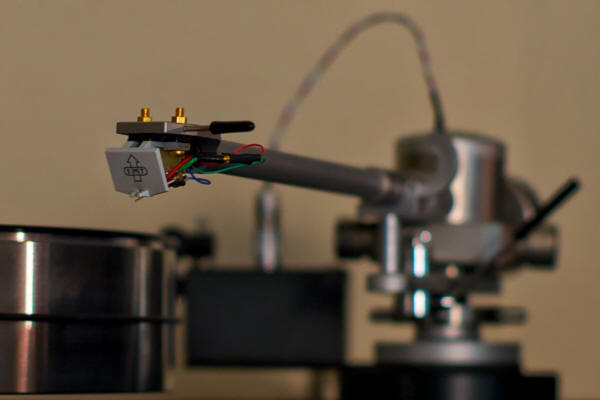
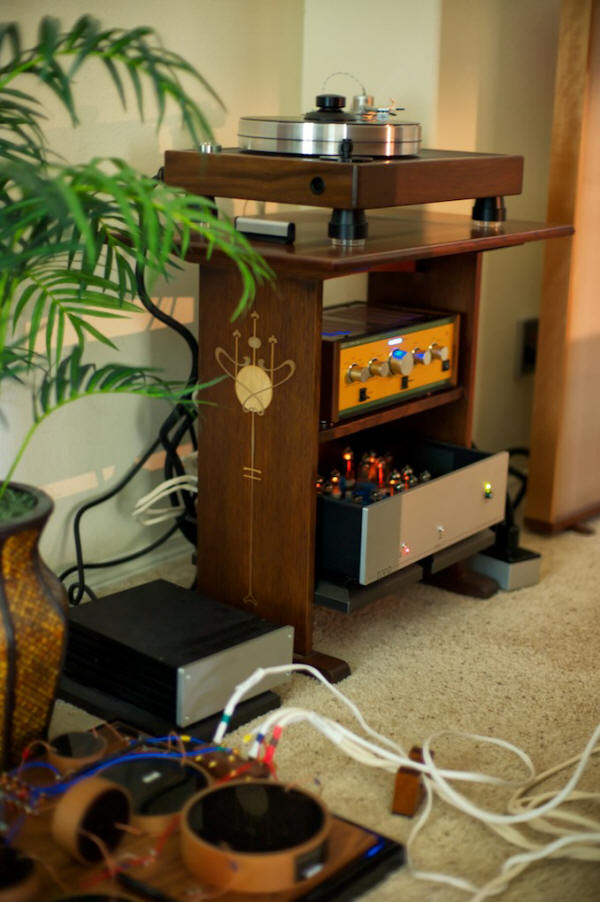
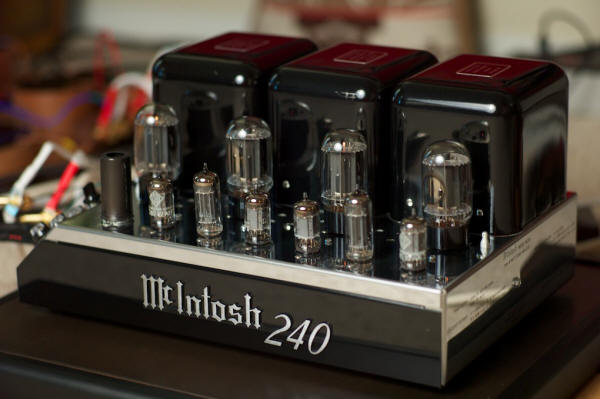
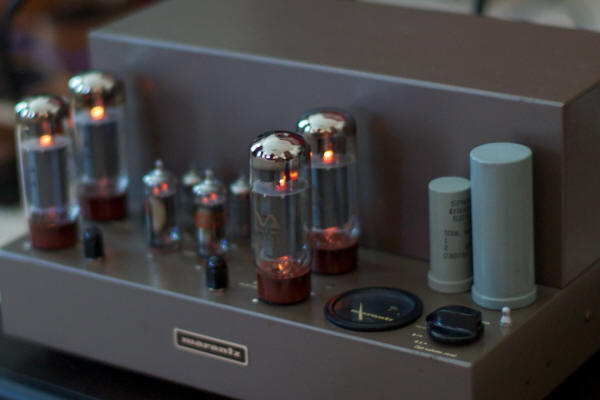
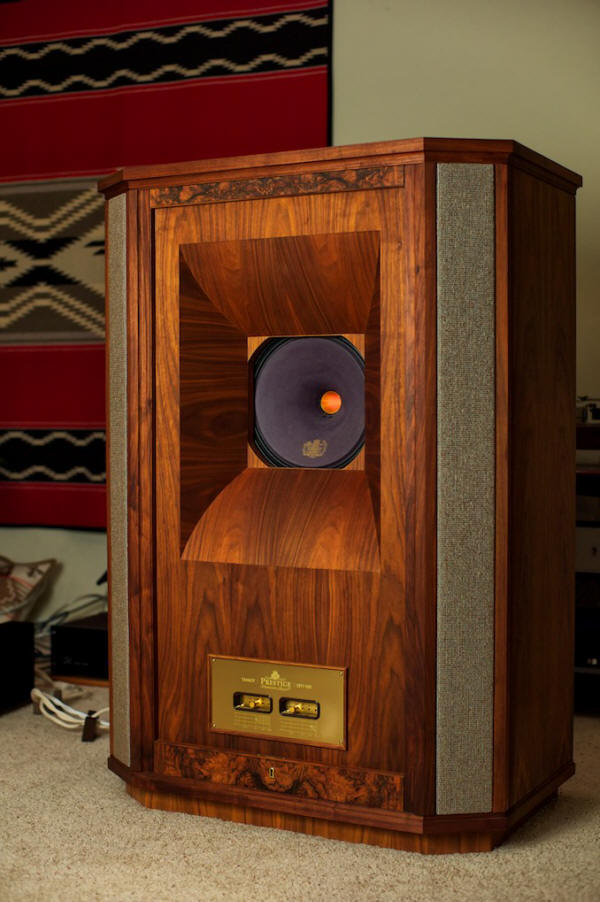
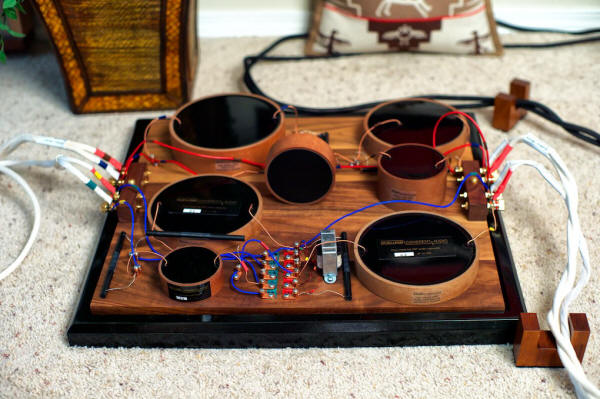
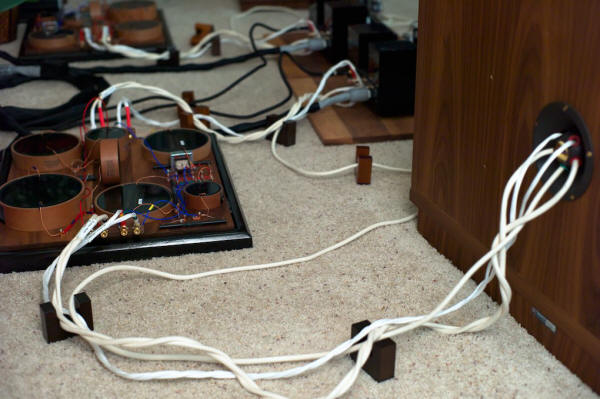
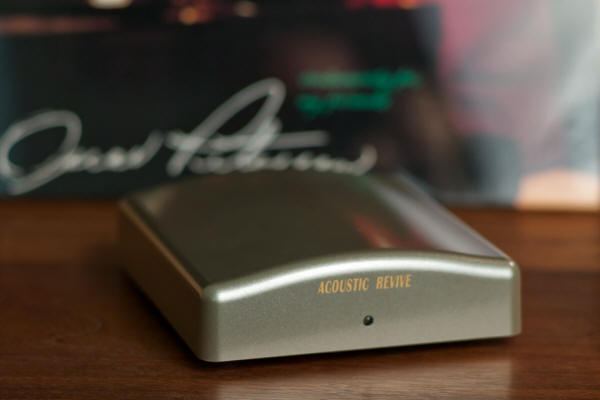
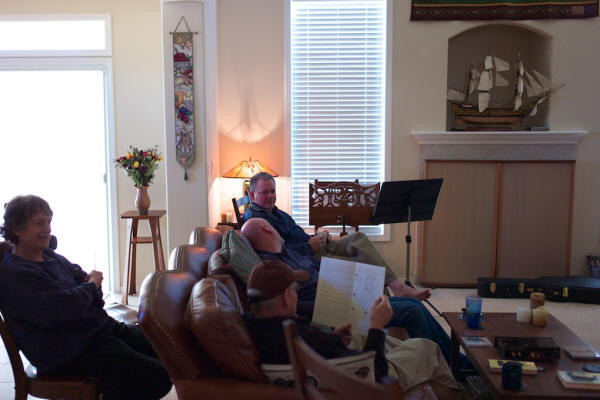
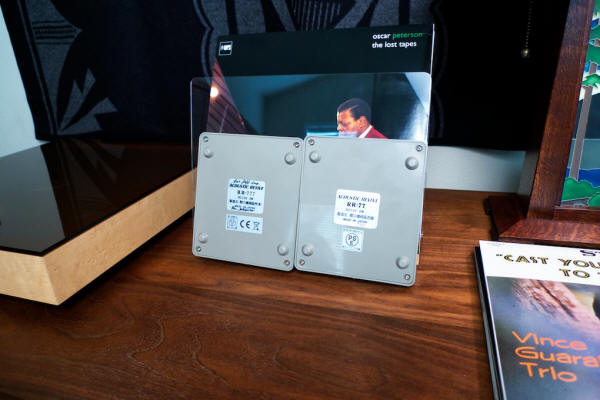
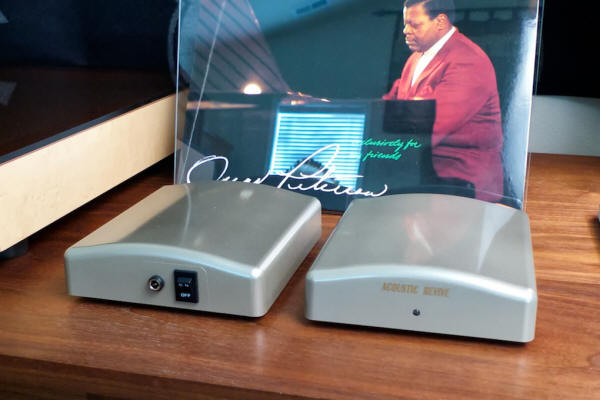
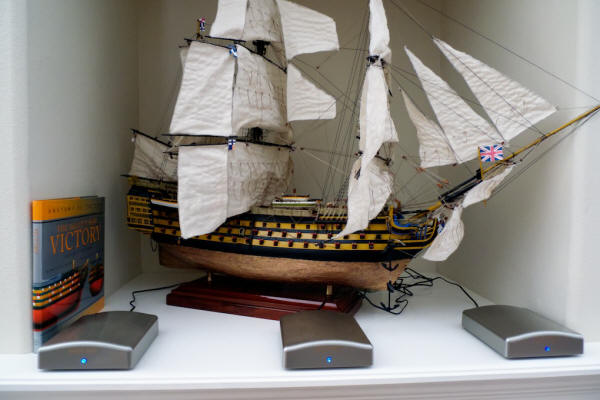
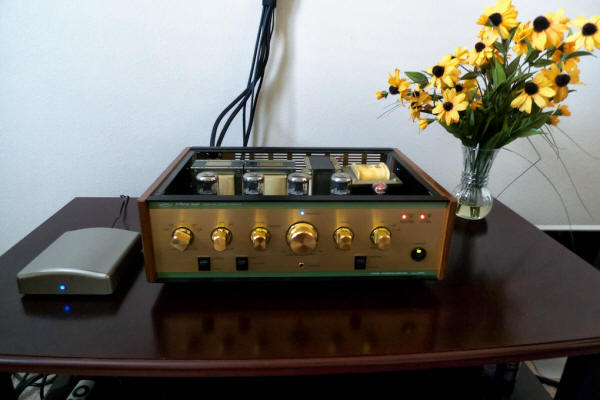
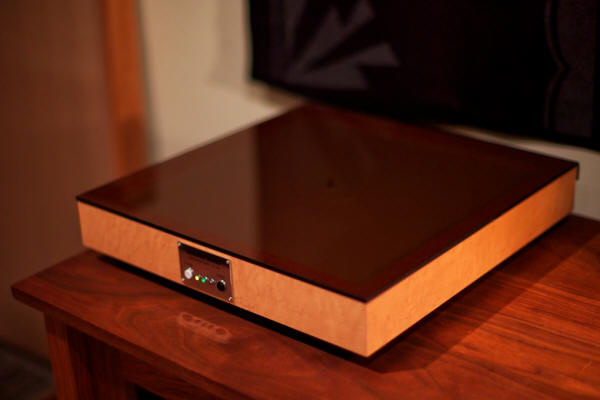
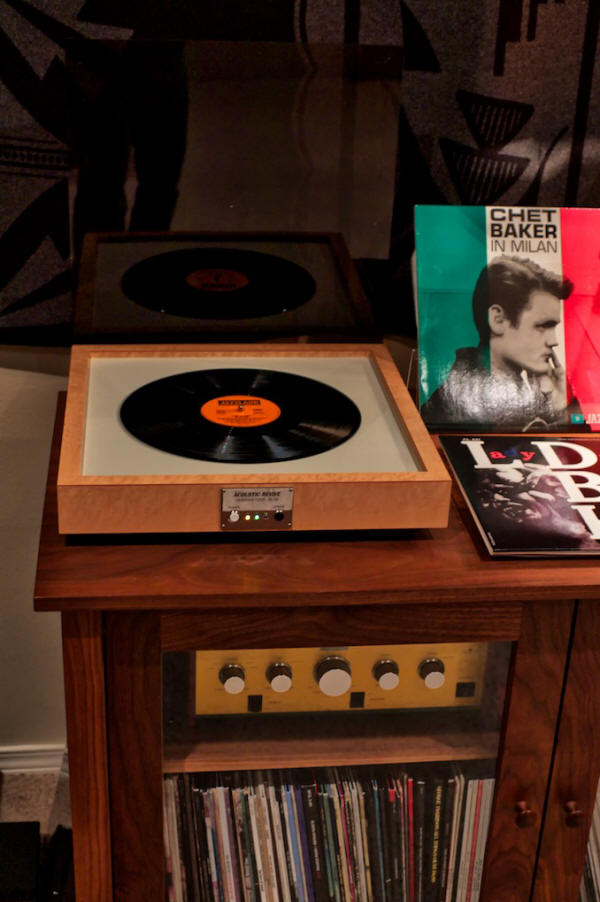
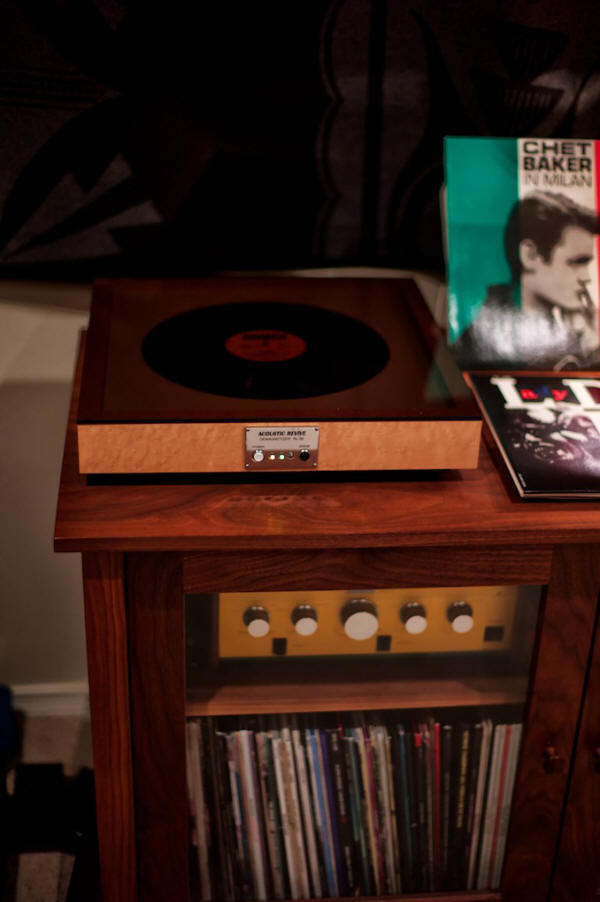
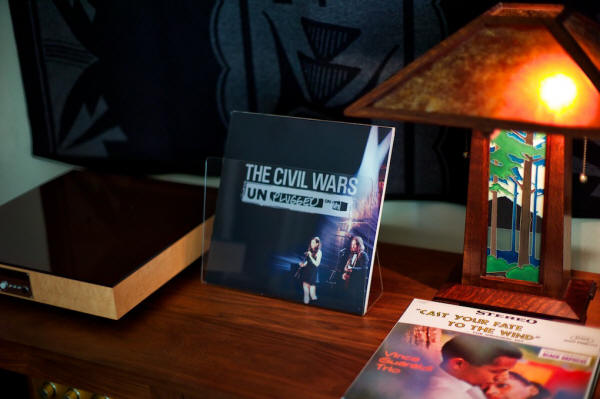
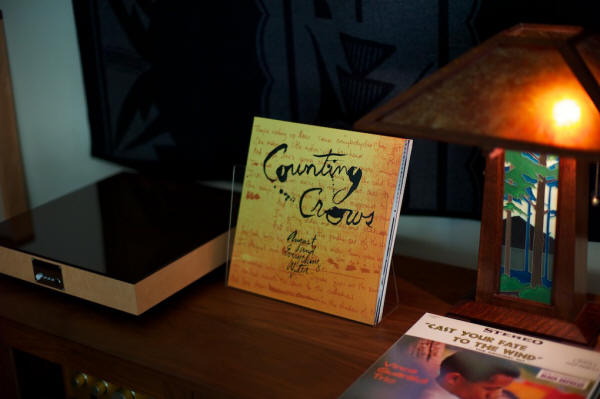
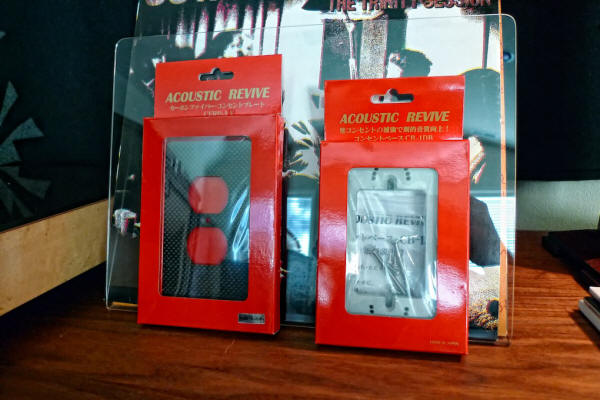
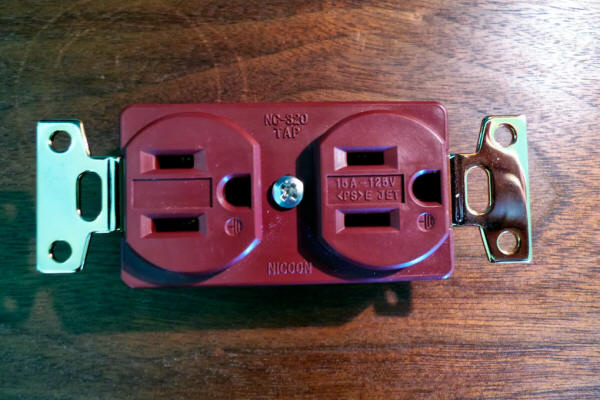
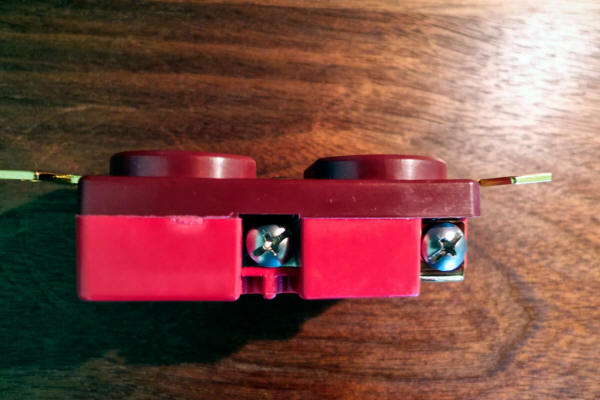
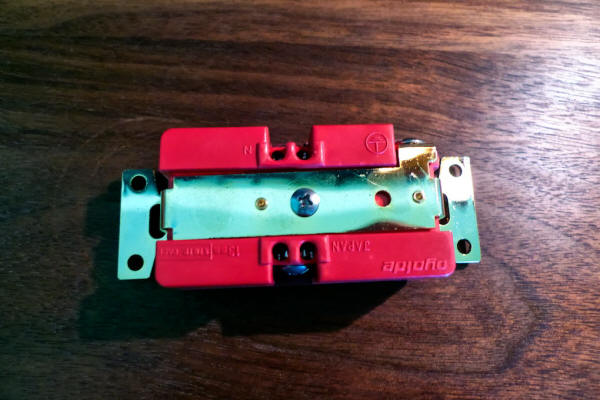
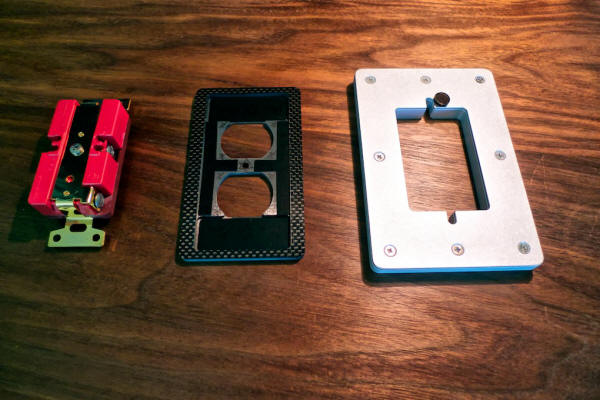
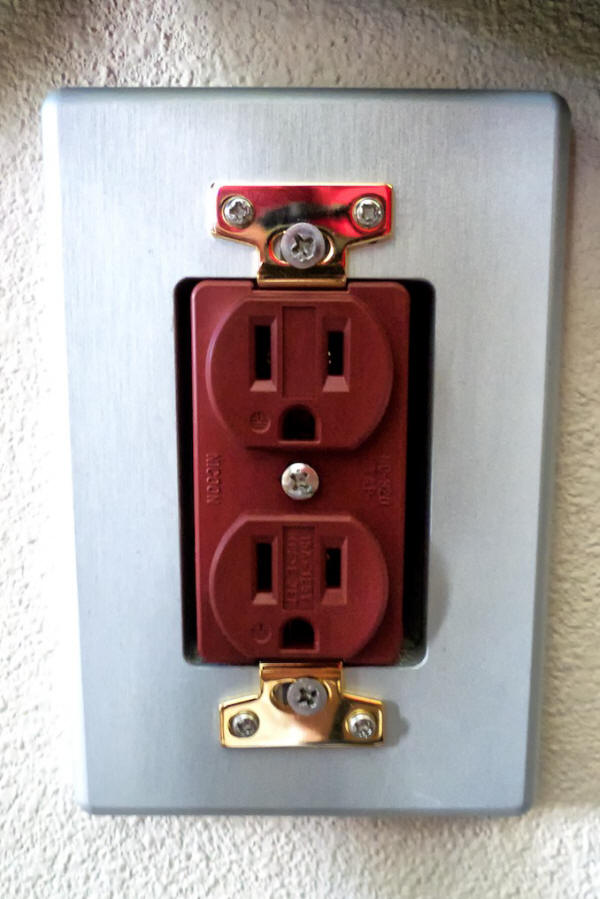
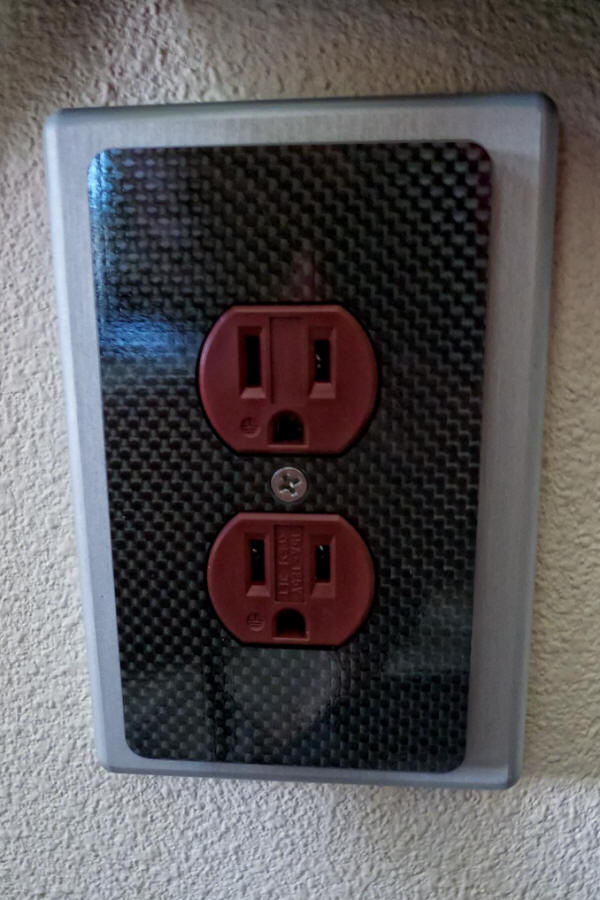
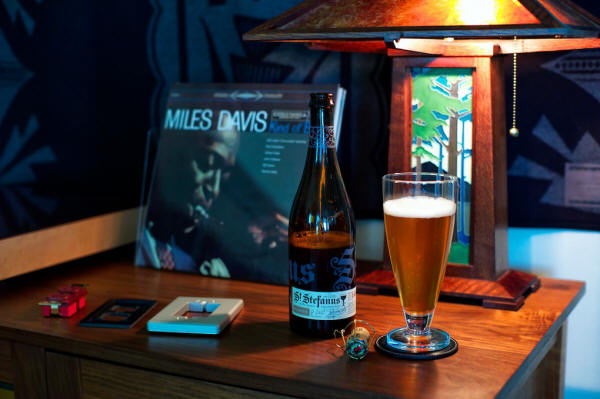
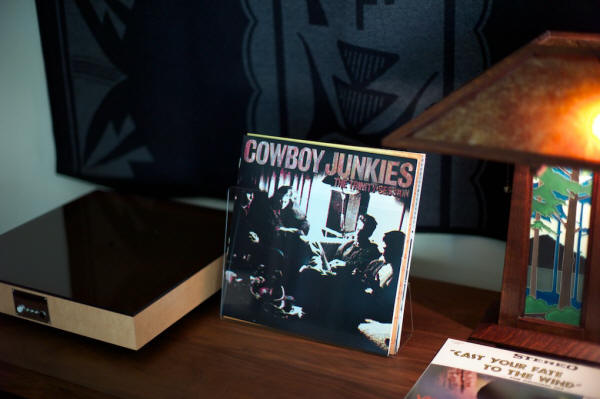
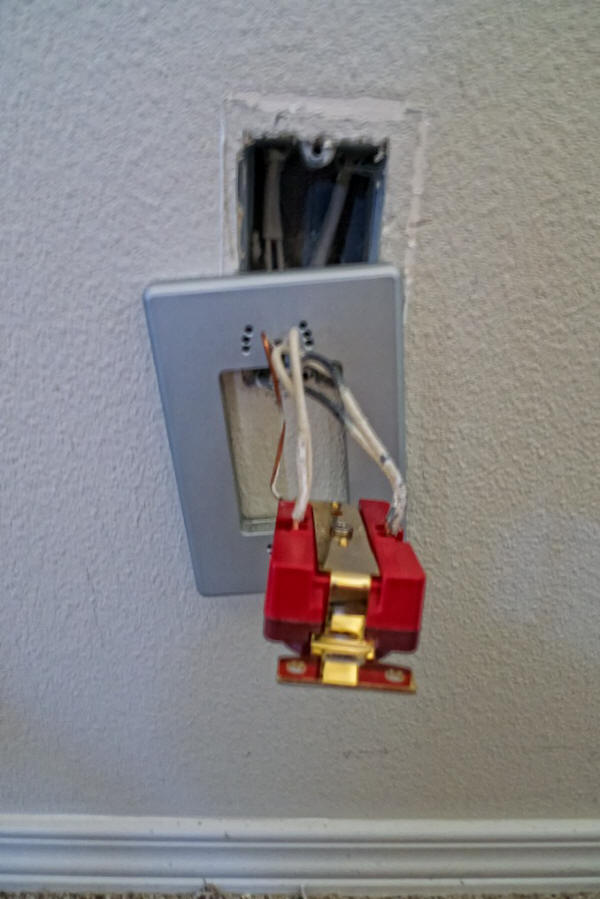
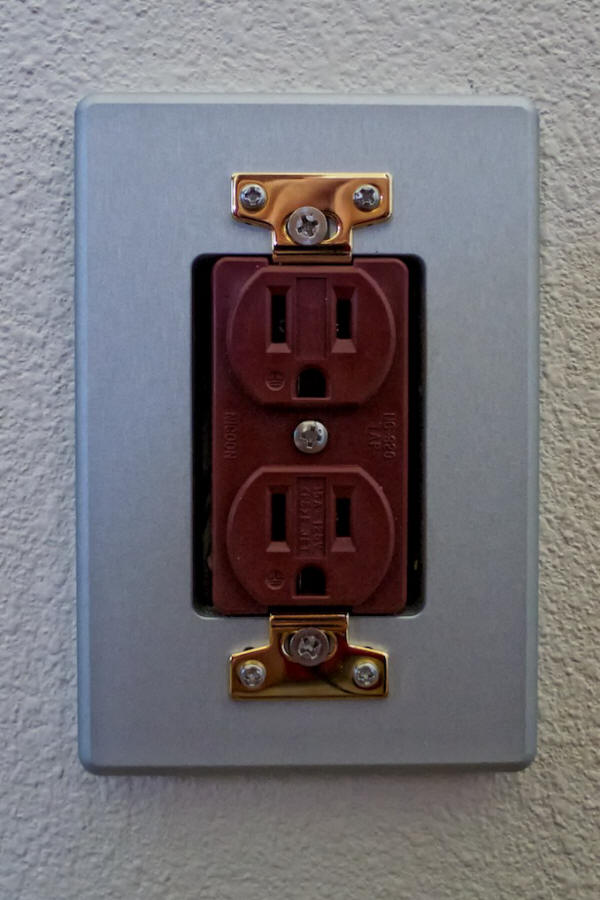
.jpg)
